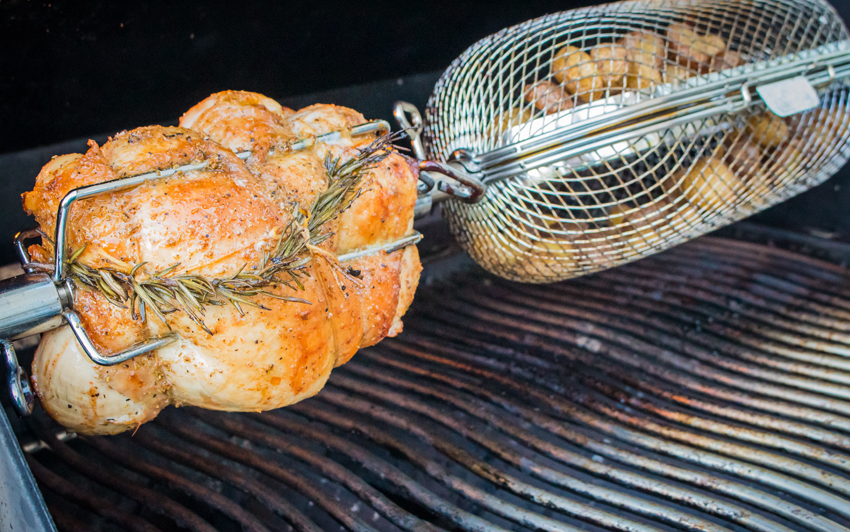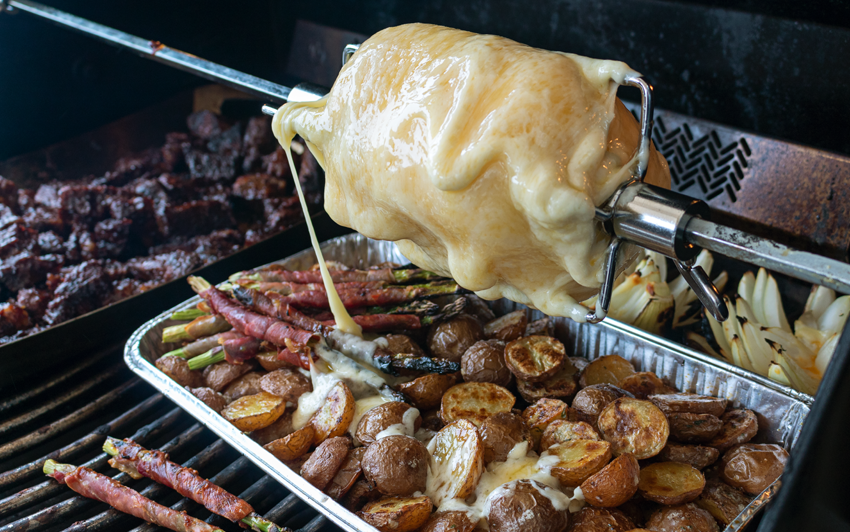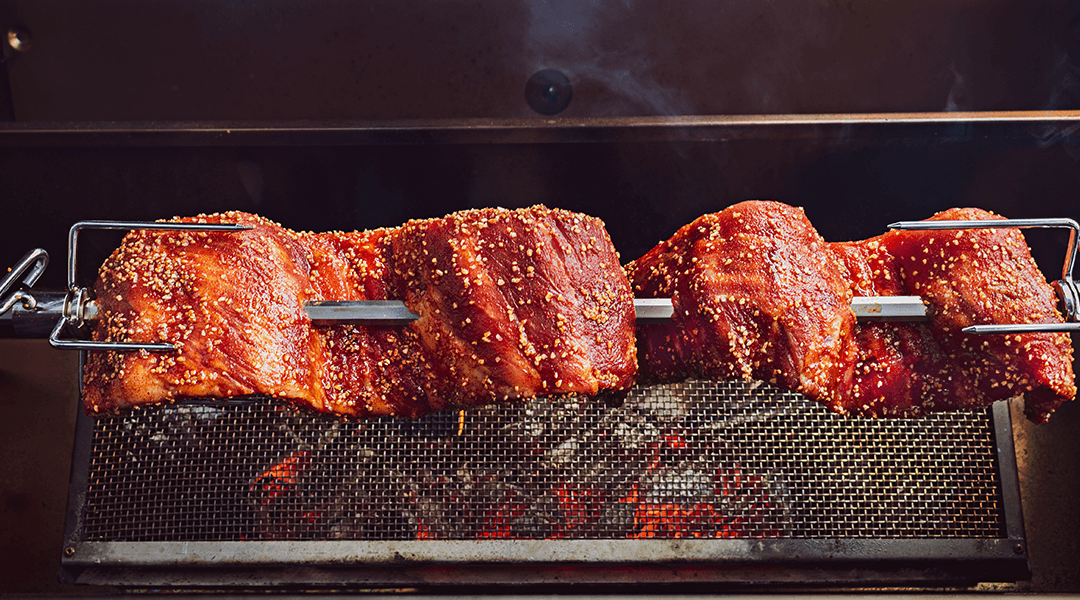Original link: https://www.napoleon.com/en/ca/barbecues/blog/science-bbq-how-rotisserie-cooking-works
Rotisserie, perfectly seasoned meat that is rotated on a spit until it is perfectly cooked. The outside is crisp and the inside is succulent. There is just something about food cooked rotisserie style that is irresistible. Originally, in castles and wealthy homes, a boy would be placed next to the fire to turn that meat on a spit. Then dogs on treadmills or wheels were used, followed by the advent of steam-powered devices, clockwork and worm drives that used the heat from the chimney to turn the meat on the spit. However this meat is cooked through, there is no doubt that the meal will be amazing. The question, besides what will you cook, is how does rotisserie cooking work?
HOW DOES ROTISSERIE COOKING WORK?
Using your rotisserie to cook provides you with all of the benefits of using the direct grilling technique without the flareups. It can provide a crisp exterior with juicy meat just below the surface.
One of the most common comments about cooking on the rotisserie is that the food is basted from the inside-out. This is true, because as the food is cooked, convection-style, from the outside-in, the juices and fat inside are rendered and released to drip over the rotating food as it spins.
As you cook, the outside of the food, a roasting chicken let’s say, is receiving warmth from the indirect heat source – a rear rotisserie burner or bottom burners. That heated outside of the meat is transferring that warmth inward to cook the deeper meat. This low and slow action renders the fat in an unhurried fashion. This unhurried rendering and slow roasting prevents the collagen in the meat from contracting quickly. Because of the slow heat, the collagen is broken down and absorbs more water to create gelatin. Paired with the melting fat, this forms a necessary part of making a meal tender and juicy. Those juices are then released from within the meat and drip over the spinning surface in a delicious coating of fats and flavorful liquids, literally basting the meal you are making.

Try this recipe for Roast of Turkey Breast with Rotisserie Potatoes.
MORE INFO ABOUT ROTISSERIE COOKING
Rotisseries have evolved greatly since medieval times. Specialized motors are calibrated precisely to provide constant turning and consistent speed. The average speed that a rotisserie motor turns is between 3 and 6 RPM (revolutions per minute). Rotisserie cooking is also great as it uses less heat, cooking foods lower and slower.

Get the recipe for these Tandoori Chicken Skewers here.
IT’S ALL ABOUT BALANCE
Balance when using the rotisserie is not just important but integral to the whole operation. When a load is unbalanced it places strain on the motor which will prevent even cooking as one side will rotate slower than the other. To achieve this, food needs to be secure and as close to the same shape all the way around as it can be. Trussing and tying roasts to ensure evenness and that there are no loose bits is very important.
Follow the directions here to learn how to balance your rotisserie.

Try melting cheese on the rotisserie like a gigantic raclette. Get the recipe here.

